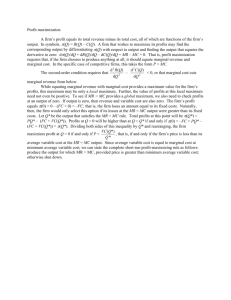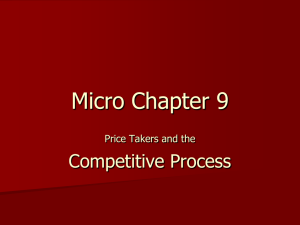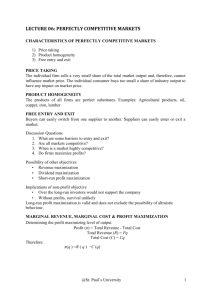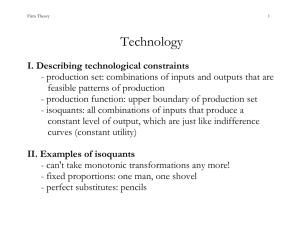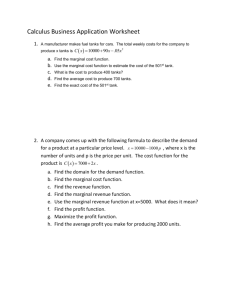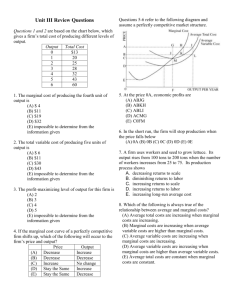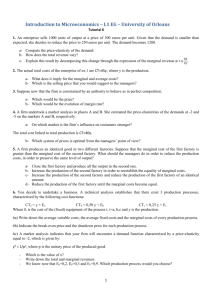The Four Market Models
advertisement
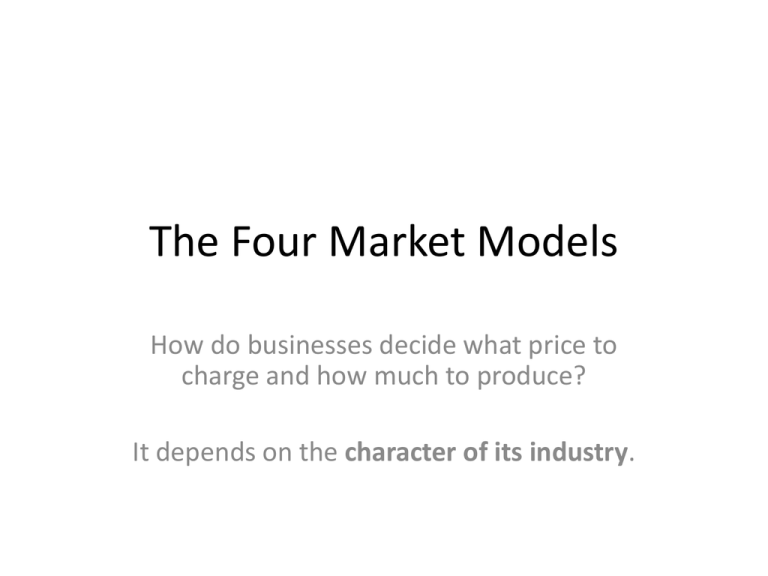
The Four Market Models How do businesses decide what price to charge and how much to produce? It depends on the character of its industry. Classroom Concerns • • • • Attendance Issues* 15 Limit Tardiness Uniform Assignment Completion Four Market Models • • • • Pure Competition Pure Monopoly Monopolistic Competition Oligopoly They differ in the # of firms in the industry, whether those firms produce a standard product, how difficult it is to enter the industry. Characteristics of Pure Competition • Large Number of Firms competing (shares on the stock market, farm products) • Standardized Products (consumers are indifferent if price is the same) • Price-Takers (at the mercy of the market price, they make up a fraction of total production) • Free Entry and Exit from Industry (no significant legal, tech, or financial obstacles) Demand for a Purely Competitive Firm • Perfectly Elastic Demand: The firm is a pricetaker, therefore, Marginal Revenue = Demand. • It cannot obtain a higher price by restricting output and it does not need to lower its price to sell more, it just has to produce it. • Figure 9-1 (217) shows the D, MR, and TR for a perfectly elastic firm. (This is not for the whole industry). Average, Total, and Marginal Revenue • Average Revenue: TR / Quantity Sold • Total Revenue: Total dollars received from the quantity sold • Marginal Revenue: Change in total revenue from selling one additional unit. Test Question (Key Question # 3, Page 243) Profit Maximization in Short-Run • Since the Purely Competitive firm is a pricetaker, it can only adjust output to increase profit. • In the short-run, only variable resources can be adjusted (labour and materials). • To find the profit maximizing point, we must compare TR and TC, or MR and MC. Profit Maximization (TR-TC) • The firm’s profit is maximized where Total Revenue (TR) exceeds Total Cost (TC) by the maximum amount. • In Figure 9-2 (220) this is displayed in two ways. One is utilizing both TR and TC curves (note the two Break-Even Points). The other is utilizing a total economic profit curve. Profit Maximization (MR=MC) • The firm can also compare Marginal Revenue and Marginal Cost to maximize profit. • The firm will keep producing more units until Marginal Revenue is equal to Marginal Cost. • For a purely competitive firm, Price = Marginal Revenue, so P = MC for profit maximization. • You cannot produce a fraction of a product. Calculating Profit • In Table 9-4 (222) Marginal Cost is still less than Marginal Revenue at the 9th unit of output. So that is where we stop producing. • Total Cost = (ATC x 9) • Total Revenue = (MR x 9) • Profit = TR – TC • Therefore: Profit = ($1179 - $880) or $299 Key Graph 9-3 Quick Quiz Minimizing Losses • If a firm is losing money, it should still produce as long as it is cheaper than them paying the fixed costs with 0 production. • If MR exceeds Marginal Cost at a higher unit of output, it should keep producing, but at a smaller loss… As long as MR > Minimum AVC. • If production adds more to revenue than it does to cost, the firm is saving money. Perfect Competition Handout • Allocative Efficiency and Perfect Competition • Complete the reading and the associated questions. • Be sure to pay attention to the supplementary graphs. • Hand-in the associated questions tomorrow.


